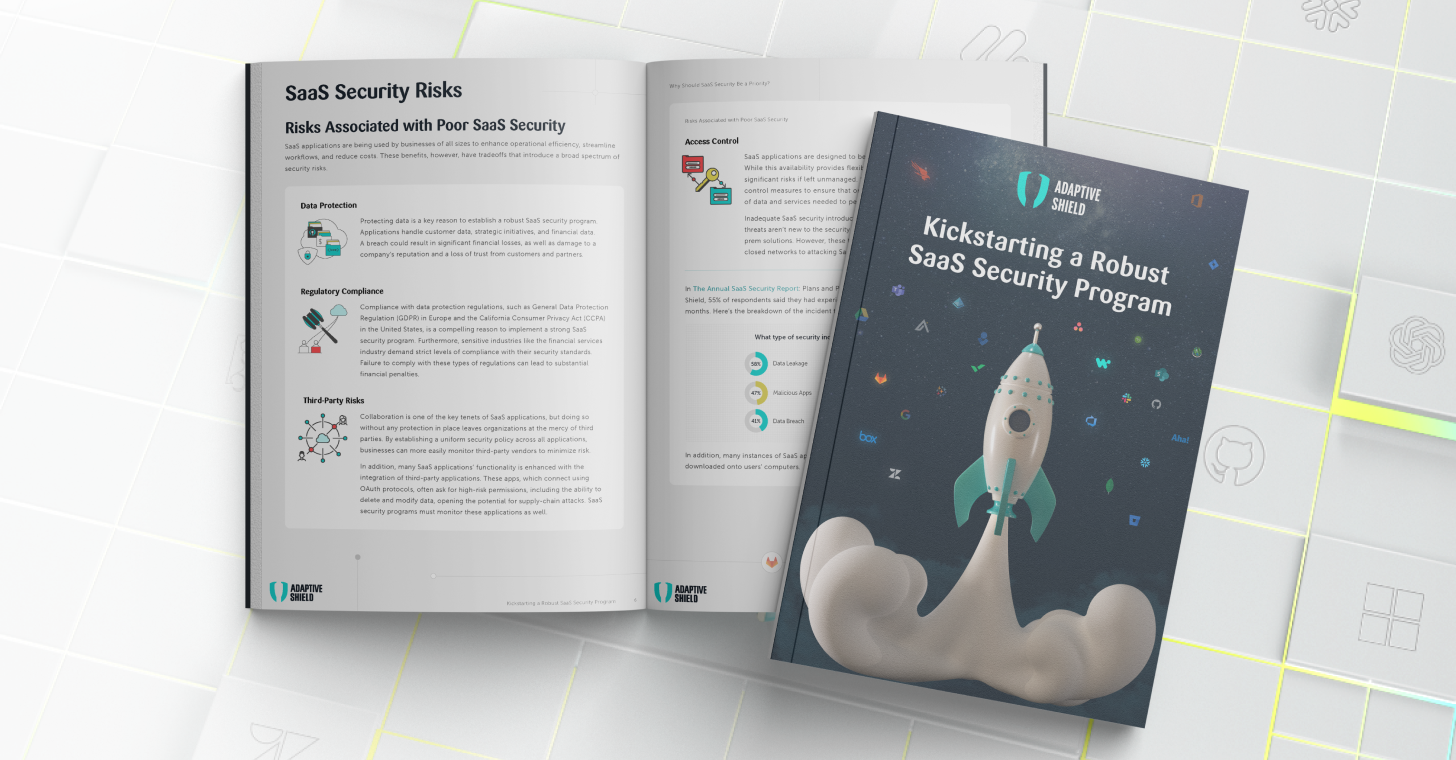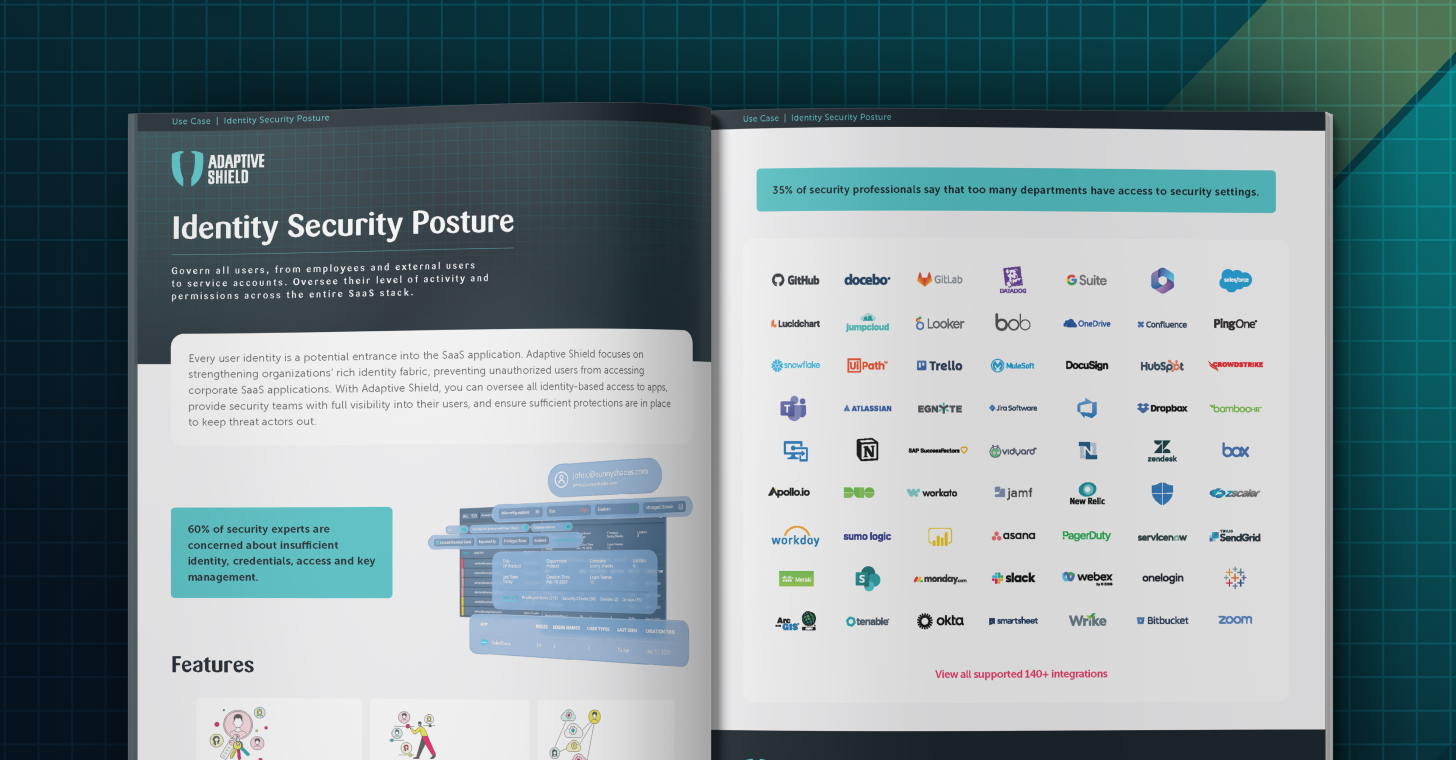Companies rely on a multitude of SaaS applications for data storage, communication, project management, and customer experience, with these apps constituting 70% of total company software usage. As this reliance grows, ensuring their security becomes increasingly vital. However, the diverse nature of these applications, their dynamic environment, and various departmental management make securing them a challenging task.
This article will look at the challenges of SaaS security and its rising importance among CISOs. It will offer practical advice on establishing a robust SaaS security strategy that strikes a balance between safeguarding applications and facilitating efficient user operations.
The Challenges of SaaS Security
Misconfigurations in SaaS applications are a major cause of breaches, as the complex and evolving nature of these settings, often with unique terminologies, makes it challenging to maintain security. Monitoring these configurations manually across numerous applications is practically impossible, leaving sensitive data exposed until the next audit. To mitigate this, organizations should establish a thick identity fabric with tools like Single Sign-On (SSO) and Multi-Factor Authentication (MFA) to enhance access security and detect threats even after a breach occurs, using Identity Security Posture Management.
Users frequently integrate third-party apps into their SaaS stack without security team awareness, potentially granting intrusive permissions. Detecting and assessing these integrations is crucial for maintaining security. Moreover, the accessibility of SaaS applications from unmanaged and compromised devices poses significant risks, especially when high-privileged users are involved. Therefore, a robust SaaS security program should review device posture, associate devices with users, and manage these risks effectively.
Identity-centric threats, such as identity-based hacking techniques, are increasingly common in SaaS environments. To prevent these threats from escalating into breaches, organizations must implement a sophisticated Identity Threat Detection & Response (ITDR) approach, which includes monitoring Tactics, Techniques, and Procedures (TTPs), detecting indications of compromise (IoCs), and identifying unusual User and Entity Behavior Analytics (UEBA) patterns.
SaaS Security’s Rising Importance to CISOs
The use of SaaS applications offers businesses various operational advantages, such as increased efficiency and cost reduction, but it also introduces a range of security risks that need to be addressed. Firstly, data protection is a paramount concern as SaaS apps handle sensitive customer, strategic, and financial data, and a security breach can lead to substantial financial losses, reputational damage, and loss of trust from customers and partners. Additionally, regulatory compliance, particularly with data protection regulations like GDPR and CCPA, is a compelling reason for implementing a robust SaaS security program, as non-compliance can result in significant financial penalties, especially in highly regulated industries like financial services.
Collaboration within SaaS applications introduces third-party risks, making it crucial for businesses to establish a consistent security policy across all applications to monitor third-party vendors effectively. Many SaaS apps also enhance their functionality by integrating third-party applications, which may request high-risk permissions. This potentially opens the door to supply-chain attacks, necessitating careful monitoring. Moreover, ensuring strict access control measures within SaaS security is essential to manage the risks associated with anytime, anywhere access. While many of these threats existed in on-premises solutions, they have now evolved to target SaaS applications.
A recent report indicates that SaaS incidents have become increasingly prevalent, with 55% of respondents having experienced a SaaS incident in the past 18 months. The most common incident types include data leaks, malicious applications, data breaches, SaaS ransomware, and corporate espionage or insider attacks. Moreover, many instances of SaaS applications contain files with malware waiting to be downloaded onto users’ computers, underscoring the importance of robust SaaS security measures.
As a result, SaaS security now has the attention of the CISO. They are looking into best practices for securing their SaaS stack, evaluating existing tools, and looking at SSPMs as a potential answer to their SaaS security challenges.
Kickstarting a SaaS Security Program
Implementing a SaaS security program isn’t as simple as buying monitoring software and turning it on. SaaS is completely decentralized across organizations, to the point that many security teams aren’t aware of all the applications being run by their organization. It takes careful planning for a successful deployment. These are the main steps you need to take to get started.
Mapping and Planning
Map your Apps and Security Requirements
Prior to establishing a robust SaaS security program, it’s crucial to begin by mapping your application landscape and understanding your specific security needs. While some widely-used SaaS apps like Salesforce or Microsoft 365 may have more critical data to safeguard, most smaller, task-specific applications used by smaller teams contain sensitive information, necessitating their inclusion in your security considerations.
Furthermore, identifying relevant regulatory and compliance requirements, such as SOX for public companies and HIPAA for medical data, is essential. Addressing user access and data privacy requirements is vital, involving the assignment of user roles and adherence to the principle of least privilege to minimize potential attack vectors, data breaches, and unauthorized access. Additionally, if your applications handle personally identifiable information (PII), ensuring your SaaS security program protects this data and complies with privacy laws is imperative.
Map Your Security Ecosystem
A robust SaaS security program should be integrated tightly into the existing infrastructure for maximum effectiveness. This integration involves connecting with the organization’s Identity Provider (IdP) and single sign-on (SSO) provider to bolster user governance and restrict unauthorized access to the SaaS stack. These integrations not only enhance application protection but also facilitate the work of security professionals. Additionally, it’s crucial to integrate SaaS security tools with the existing SOC, SIEM, and SOAR tools to enable efficient analysis of alerts, event management, and automation of remediations and user deprovisioning, streamlining the efforts required to secure the SaaS environment.
Identify Your Stakeholders
Identifying stakeholders in SaaS security is a complex process, as business units primarily responsible for productivity and efficiency often prioritize workflow and collaboration over security. In contrast, security teams aim to secure company data but often lack insight into and access to new applications. The situation is further complicated by the unique language each SaaS application uses for its settings, making it challenging for security teams to provide user-friendly guidance for business teams. With numerous applications, each with multiple configurations and users, managing security settings becomes a formidable task. An effective SaaS security program necessitates collaborative efforts and compromises between these two groups to strike a balance between risk reduction and productivity enhancement.
Onboard Stakeholders and Define Responsibilities
Securing SaaS applications involves several key teams. The primary stakeholders are the app owners and the security team, but Central IT also plays a crucial role in SaaS security, managing elements like SSO, infrastructure, and hardware, which indirectly impact security through the management of Active Directory, IdP, and servers. Governance and Compliance (GRC) are responsible for enforcing organization-wide compliance, including within the SaaS stack, ensuring that application configurations align with company policy and industry-specific regulatory requirements, making them a vital stakeholder in SaaS security.
Execution in 7 Steps
Step 1: Define applications for a pilot
Step 2: Define short-term and long-term KPIs and goals
Step 3: Start increasing your posture
Step 4: Measure security posture based on improved security configurations and industry standards
Step 5: Review and secure third-party connected applications
Step 6: Check how secure the devices accessing your SaaS are
Step 7: Detect identity-centric threats that have entered into your SaaS apps
Automate SaaS Security
SaaS Security Posture Management (SSPM) tools provide automated 24/7 monitoring of your SaaS stack security. When settings change or circumstances cause an app’s posture to deteriorate, SSPMs trigger a security alert and provide remediation guidance for the application.
Unlike manual checks, which provide a moment-in-time view of security, SSPMs continually monitor applications, ensuring that any change in posture is immediately noted.
SSPMs go beyond security checks. As mentioned in the introduction, they identify and monitor third-party applications, manage access, identify devices used to monitor the application, prevent data from leaking, and detect threats.
While there are other security tools on the market that claim to secure SaaS applications, notably CASB solutions, none provide the breadth and depth of coverage offered by an SSPM.





















